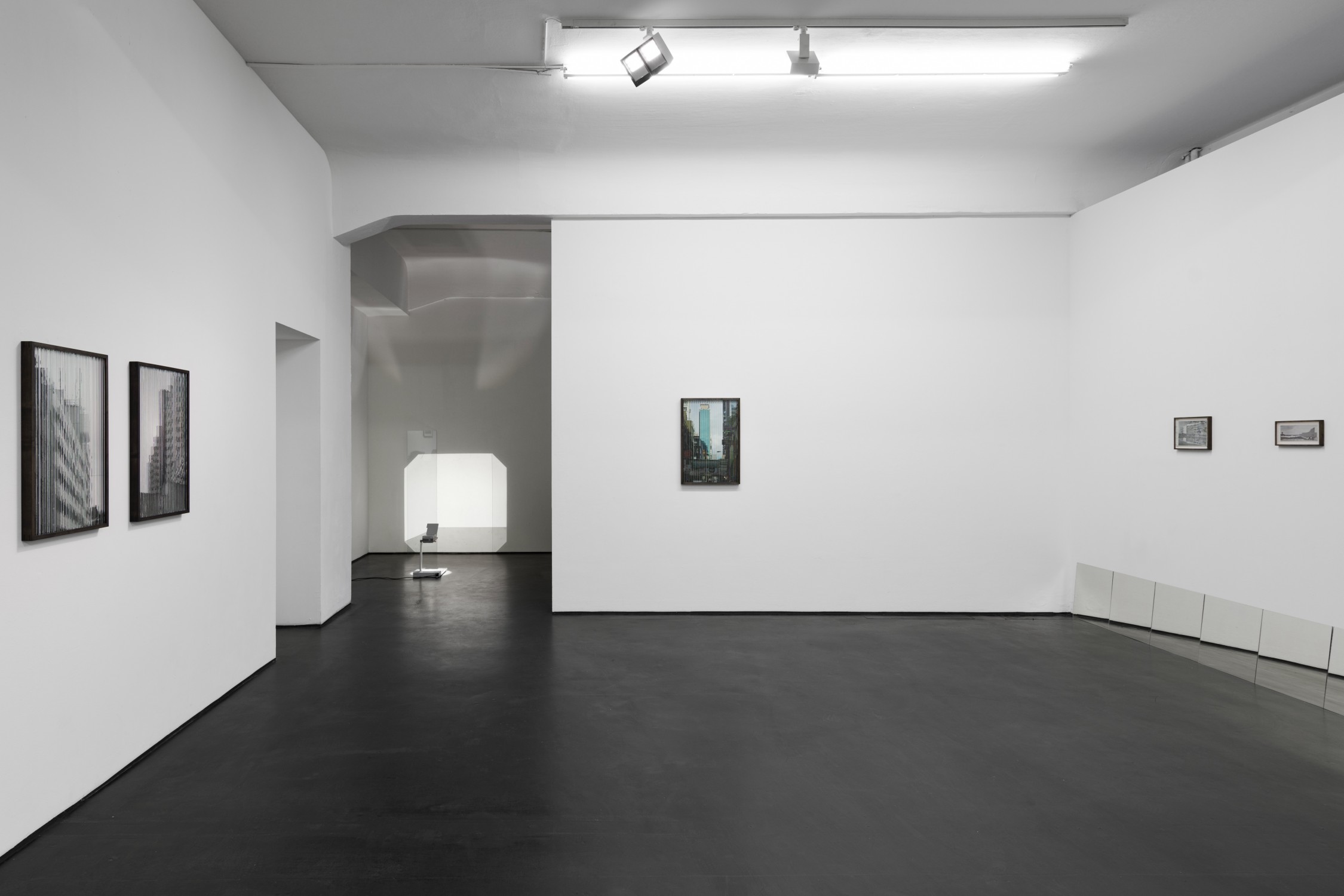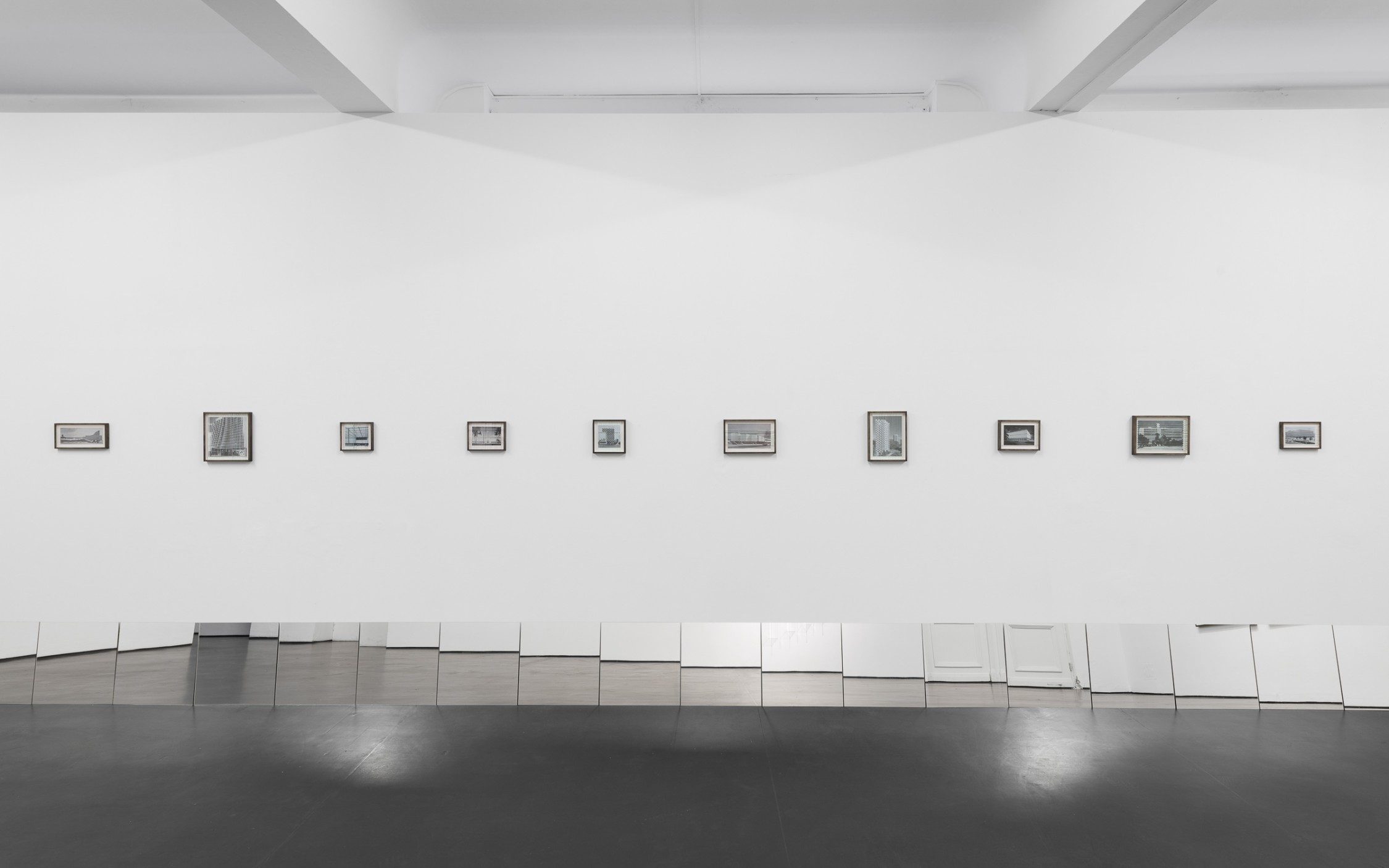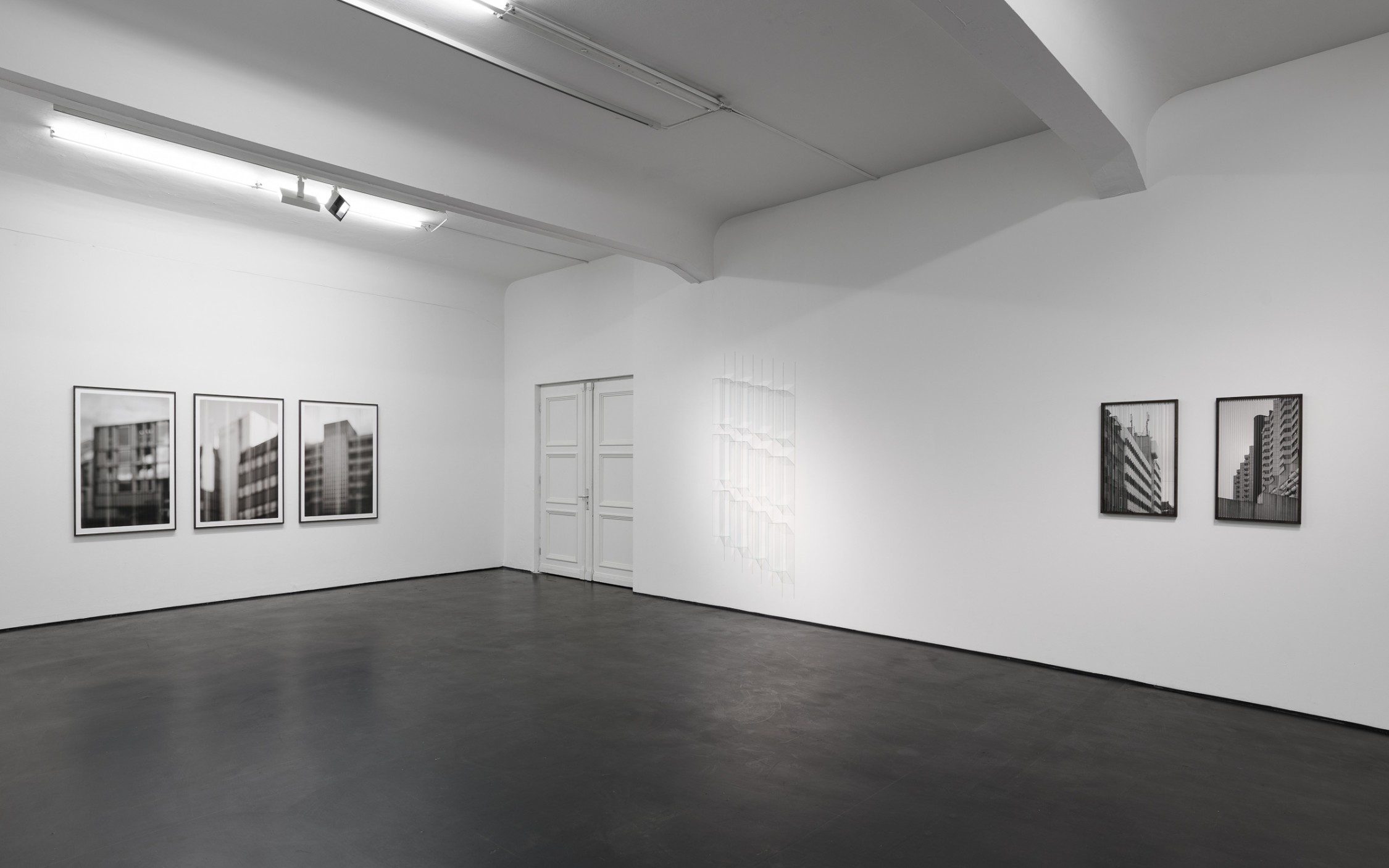




“Normally we live surrounded by transparent walls which seem to be knitted of sparkling air; we live beneath the eye of everyone, always bathed in light.” Yevgeny Zamyatin, We (Record 4), 1919
Sinta Werner’s work demonstrates a fascination for the dematerialising and perception-altering effects of glass in interaction with architectural structures.
In her fourth solo exhibition at the Galerie alexander levy, glass cubes hang on the walls or stand on a slide projector and throw immaterial, tectonic light and shade forms. Many references to the 1920s avant-garde are to be discovered, such as László Moholy-Nagy’s Light-Space Modulator and the transparent architectural drawings of the Constructivist Theo van Doesburg. Both were protagonists of a Modernism that celebrated glass architecture as the driver and expression of a new and better human being who had nothing to hide. In Sergei Eisenstein’s designs for the film Glass House, this total visibility conversely encourages atrocities, which are, as it were, exhibited in the glass cubes. An idea in Jeremy Bentham’s Panopticon was continued by Le Corbusier: the idea and function of architecture as a viewing machine or even a camera.
Sinta Werner’s photographic works could be described as viewing machines or optical apparatuses that give ephemeral, broken perspectives on late Modernist buildings. The primarily black and white architectural images – the small-format photos of the series Anticipation of the Moment are taken from historical books, the artist made the large-format ones of the series Erscheinen um zu verschwinden – are overlaid with glass strips. Framed in dark-stained wood, they are placed where the glass usually and unobtrusively protects the image. Size and placement are variable. They are oriented towards the architectural structures that form the image and optical effects such as the material and semantic intertwining evoked by the cut and use of glass.
This effect is particularly impressive in the shot of the Capitol Complex, a project developed by Le Corbusier in the 1950s and published in the architect’s Œuvre Complète. Using a vanishing point perspective, the image shows an elongated building and its reflection on the water, centrally divided by an embankment. The artist reflects the horizontal structure of the exposed concrete building in the horizontally placed glass strips. She joins the strips over the reflection to form a smooth surface resembling that of the water. Just as the building’s mirror image floats in the water and is distorted by vibrations – in the form of concentric circles in the present photographs – its photographic reproduction appears here through the glass strips and its edges. The strips are regularly spaced over those parts of the image that show a direct view of the building. This placing instantly opens the composition of the photographic image and also produces a multi-variational depth gradation through transparency and mirroring effects. The questionable transparency of the photographic medium is on the one hand reinforced by the glass strips, on the other hand disrupted. The flat and static photograph is thereby expanded into the spatial-dynamic dimension of architectural perception.
The optically-pictorially motivated use of glass strips corresponds to the constructional use of glass fins and brise soleil in architecture. The latter serves as a sunshade consisting of rigid horizontal or vertical overhangs that structure some of the buildings chosen by Werner – including Le Corbusier’s Capitol Complex, which introduced the brise soleil into modern architecture.
The brise soleil creates a splintered, transparent structure on the facade of a building. In Werner’s work, the superimposed glass strips, in keeping with the meaning of the word ‘brise’ (break), rupture and shatter the architectural structures of a one-dimensional image. With her vitreous brise soleil, the artist explodes the flat architectural image into a resemblance of virtual architecture.
Finally, in the series Passages Marginales, vitreous effects are simulated. Here, Werner’s highly blurred photographs show embassy buildings as if shot through vertically ground glass. Depending on the focal point, the incisions made on the actual photographic surface appear to be fences, image interferences or shimmering air. The deeper dimensions start to pulsate and one’s own orientation to teeter when looking at these images.
Text by Cora Waschke
Photos by Trevor Good